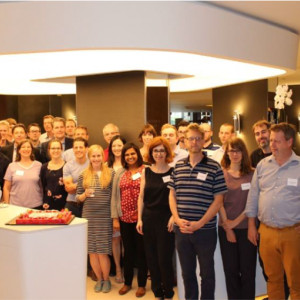 \
&
Contact us
\
&
Contact us
 \
&
Contact us
\
&
Contact us
This was 1 year ago
LocationBrussels
Powerful digital technologies, in particular Artificial Intelligence (AI), will have a profound impact on sustainability research. For the first time, we can now build sophisticated digital models for different compartments of the earth system. The aim is to employ effective tools to support decision making to address environmental challenges and to explore optimised pathways towards a sustainable way of living.
AI-based models and Digital Twins are a priority for Helmholtz in all research fields. Let us discuss how exactly they will help to shape our future in the Earth and Environment domain: What observational data and tools do we need for Digital Twins? What role will Artificial Intelligence and Large Language Models play in their development?
Together with experts from science and policy, The Helmholtz Office Brussels will present current and future applications of Digital Twins and discuss user needs and expectations.
More info and registration via the event website.
We offer news and event updates, covering all domains and topics of Horizon Europe, Digital Europe & EDF (and occasionally, for ongoing projects, Horizon 2020).
Stay informed about what matters to you.
By signing up, you can opt in for e-mail notifications and get access to
a personalised dashboard that groups all news updates and event announcements in your domain(s).
Only for stakeholders located in Flanders

Circusol is an Innovation Action project funded under a cross-cutting work programme part of Horizon 2020. Circusol aims at unleashing the full potential of circular business models, in particular Product-Service Systems, in simultaneously delivering real environmental, economic and user benefits. By that, Circusol aims to establish solar power as a spearhead sector in demonstrating a path driven by service-based businesses towards a circular economy in Europe.
A strong Flemish partnership in new Horizon 2020 project on circular economy business demonstrators, including VITO (Coordinator), IMEC, Ecopower cvba, Futech bvba, PV Cycle aisbl and Daidalos Peutz bvba.